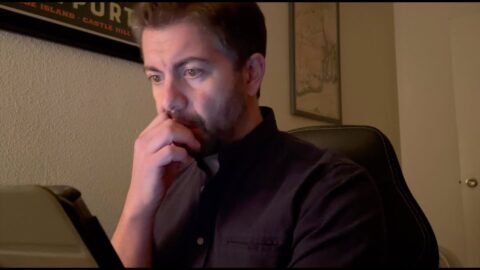With so much mental health information online and on social media, you deserve to be able to find the best. But it can be hard to tell what information is accurate for things like depression, anxiety, trauma, ADHD, and other mental health difficulties.
Dr. Matt B follows-up on the previous Emotional Minutes video in this series by talking about methods to recognize good content online and on social media.
Part 2 covers how to recognize substantiated information in text and in links versus information that may not be supported or may not be known to be true.
Hope it helps!
Hi, I’m Dr Matt B, and these are your Emotional Minutes. It’s good to be here with you! We’ve been talking about how to find good mental health information online. More specifically, how you know that what you’re viewing on social media or on blogs is reliable or good information. Today, we’re going to talk about strategy number two.
The second strategy concerns asking or looking for if they say where they got their information. This is because there’s a lot of info out there. Some of it could be based on good information. And then there is information that is kind of shaky. Beyond that, some of it’s really not helpful and can even sometimes be harmful.
Be able to ask the question “where is the content saying that they got their information from?”. The first thing to look at about that is did they cite anything? Did they leave any links or any information about where they got their information? Putting a hyperlink to something else or discussing a study that helps them know that what they’re saying is accurate or is valid. If they don’t do this or if they’re just talking and saying ideas or making claims without giving any information about where they got that information, it might not be accurate.
Sometimes, people might discuss some information and they don’t talk about any studies but they leave quotes. In moments like that, you might think “Well, what do you do about quotes?”. Quotes can be helpful depending on what the source is. If they’re a mental health provider in a hospital, a researcher at a university, or they teach college courses, they may have more credibility. Maybe it’s a good source because that person studies the topic deeply and dedicates a lot of time to it.
Now, if, in their article, they actually talk about research that was done, whether they discuss that research or leave like a little link to a research study, check that the study says the same thing that they’re saying or supports what they’re saying. If it does, then that’s a really good thing! You found good mental health information. That’s what we call a green flag right. It helps you know that they are discussing something with research backing that that has been investigated deeply.
Another part of the second strategy is to look at any links that they leave in a post. Are they providing links to research studies or a paper that’s diving deep into past research? Or are the links going to other blogs that link to other blogs that link to… you guessed it, other blogs? This might be fine if the other blogs talk about research studies or leave links to research studies. However, if the other blog doesn’t do this, there is no way to understand the validity of the claims they make. With so much information out there, you can find the content that’s giving you information that makes you a little bit more confident than it’s good information instead of relying on unvalidated information.
Really, strategy number two is asking where did they get that information and looking in the content to see if they give any information about where they got that information. Did they leave links to any research studies? Do they discuss any studies that were conducted? That’s a green flag. But if it’s just people or content talking about a certain thing without giving information about where they got that information, you can’t be sure the information is valid. It might be, but you just don’t know. And there’s plenty of valid information out there or ways you can be confident about that information.
There are a bunch more strategies that we will talk about in the next couple of episodes. Today we talked about strategy number two: Checking where the information came from.
It was good being with you here today. I’m Dr. Matt B., and these are your Emotional Minutes. We’ll see you next time!



